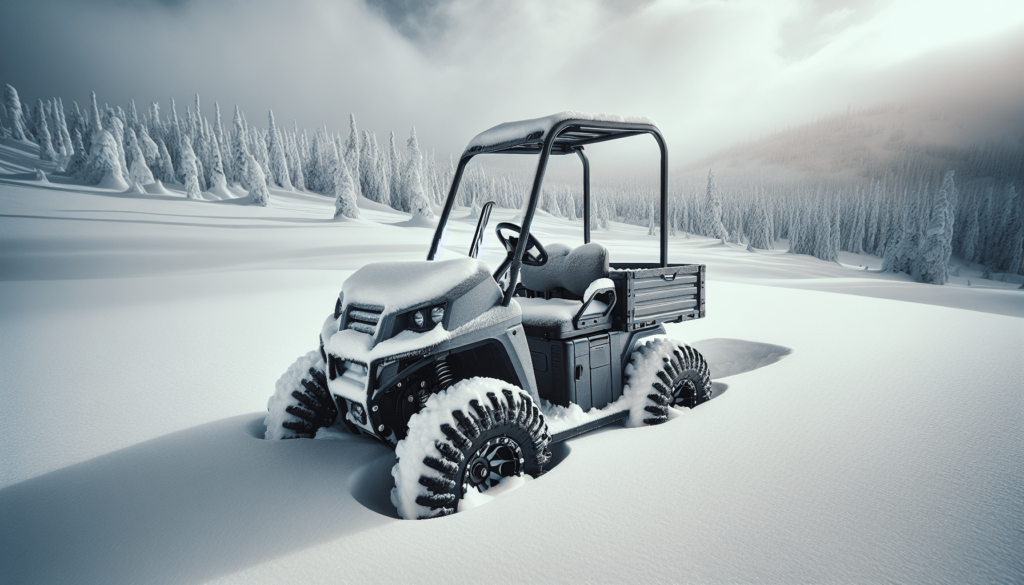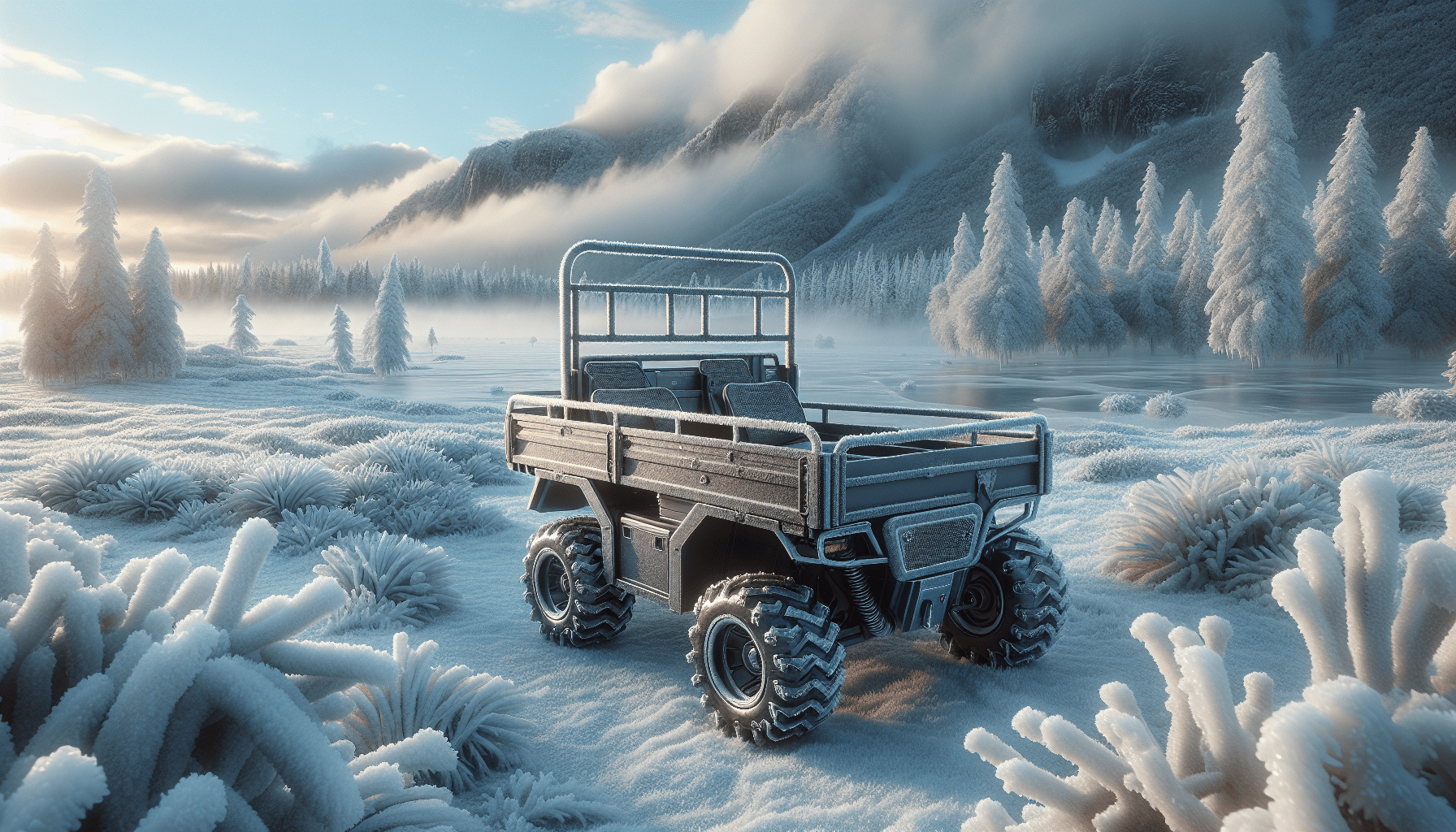Have you ever found yourself wondering if that handy utility cart you love so much can tackle the challenges of snowy or icy terrain? If so, you’re not alone! Many people rely on utility carts for their versatility, but snowy conditions can raise some valid concerns. Let’s unravel the details of using a utility cart in winter weather together.

Understanding Utility Carts
Utility carts, those trusty companions for outdoor work or recreational activities, come in all shapes and sizes. Typically, they’re designed for hauling supplies, tools, or even just your groceries. Whether you have a heavy-duty model or a lightweight option, understanding its components can help you figure out how it handles in tricky weather.
Types of Utility Carts
There are various types of utility carts, each with unique features suited for different tasks. Here are a few common types:
| Type | Description | Best Use Cases |
|---|---|---|
| Hand-Truck | A simple two-wheeled cart often used for moving boxes. | Indoor and short-distance hauling |
| Folding Utility Cart | Lightweight and collapsible, easy to store. | Light items and easy transport |
| Garden Utility Cart | Equipped with large wheels and a higher weight capacity. | Gardening and outdoor tasks |
| Heavy-Duty Utility Cart | Made from robust materials, designed for heavy loads. | Construction and industrial work |
Knowing these different types allows you to choose the right model for your needs.
Assessing Snowy and Icy Conditions
When you think about using a utility cart on snow or ice, consider the terrain’s condition. Both snow and ice can be unpredictable, and understanding the challenges they present is essential before heading out.
Snowy Terrain
Snow can create a beautiful winter wonderland, but it also adds weight and resistance. Wet, heavy snow and deep drifts can impede your cart’s movement.
- Weight of the Snow: Heavy snow can weigh down your cart more than usual.
- Depth: Shoveling paths may be necessary if the snow is too deep.
Icy Terrain
Ice presents its own set of challenges. The slick surface makes for poor traction, which can lead to difficulties in moving your cart.
- Traction Loss: If your cart’s wheels are not designed for traction, you might find yourself struggling.
- Sliding Risks: A cart can easily slide on ice, leading to potential spills or accidents.

Determining Cart Compatibility with Snow and Ice
Now that you’re aware of the challenges of snowy and icy conditions, let’s look into whether your utility cart can be adapted for these environments.
Wheel Type and Material
The wheels of your utility cart play a significant role in how well it navigates ice and snow.
- Pneumatic Wheels: These air-filled wheels provide better traction and cushioning. They can handle uneven surfaces quite well.
- Solid Rubber Wheels: While they may be more durable, they usually offer less grip in slippery conditions.
- Tread Design: Deep treads can improve traction, while smooth wheels might lead to sliding.
Weight Capacity
Understanding your cart’s weight capacity and considering the added weight from snow or ice can impact its performance.
- Check Manufacturer’s Ratings: Always refer to your cart’s specifications.
- Consider Load Level: Avoid overloading during winter—extra weight from snow can lead to strain or damage.
Making Modifications
If you’ve determined that your utility cart may struggle in winter conditions, don’t worry! There are several modifications and adaptations you can make.
Adding Traction Aids
Using traction aids can help improve your cart’s performance on slick surfaces.
- Tire Chains: These can be wrapped around wheels to enhance grip in icy conditions.
- Studded Tires: Some specialty carts come with studded tires designed specifically for icy conditions.
Weight Distribution
Proper weight distribution can help maintain balance and stability while navigating tricky terrain.
- Load Low: Keeping the center of gravity low can prevent tipping or sliding.
- Even Distribution: Spread the load evenly across the cart to ensure stability.
Selecting the Right Utility Cart for Winter Conditions
If you’re in the market for a new utility cart specifically for snowy or icy terrains, here are some features to look out for:
Features for Winter Use
- Wider Wheels: Wider wheels can help prevent the cart from sinking into snow.
- Higher Ground Clearance: A cart with higher clearance can avoid snow drifts.
- Durable Materials: Corrosion-resistant materials will help maintain the cart through winter conditions.
Recommended Models
While brand recommendations can vary based on your needs and location, considering utility carts designed for rugged conditions is crucial. Some popular options include:
| Cart Model | Wheel Type | Notable Features |
|---|---|---|
| Gorilla Carts GOR2500-D | Pneumatic Wheels | High weight capacity, heavy duty |
| Mac Sports Collapsible | Solid Rubber | Folding design, easy to store |
| Suncast Utility Cart | Pneumatic Wheels | Durable design, all-terrain wheels |
Best Practices for Using Your Utility Cart in Winter
Once you’ve equipped your cart for winter or selected a suitable model, there are several best practices to keep in mind for safe usage.
Pre-Use Assessments
Before heading out, know your surroundings and the current weather conditions.
- Check Weather Forecast: Avoid using your cart during severe weather conditions.
- Inspect the Terrain: Identify any icy patches or deep snow.
Safe Navigation Tips
As you maneuver your utility cart in winter conditions, consider the following tips for safety and efficiency:
- Go Slow: Tread lightly, especially on icy surfaces.
- Use Two Hands: Maintain control by using both hands while pushing or pulling.
- Plan Your Route: If possible, stick to cleared paths or areas with less snow and ice.
Caring for Your Utility Cart Post-Winter
After a winter of use, caring for your utility cart is essential to prolong its life and maintain functionality.
Cleaning Process
- Remove Snow and Ice: Always clear snow and ice from the cart after use.
- Rinse and Dry: Rinsing off salt or debris can prevent corrosion, particularly if your cart has metal components.
Lubrication
Regularly lubricate moving parts to ensure your cart operates smoothly.
- Wheels: Check wheel bearings and apply appropriate lubricant.
- Hinges: If your cart has folding mechanisms, keep hinges lubricated to prevent rust.
Conclusion
Using a utility cart on snowy or icy terrain is indeed possible, but it requires some thought and preparation. By understanding your specific cart, knowing the terrain you’re dealing with, and making any necessary modifications, you can confidently navigate winter conditions. Take the time to assess your situation, choose or adapt your cart wisely, and you’ll find that winter doesn’t have to slow you down or limit your hauling needs. Happy carting!

